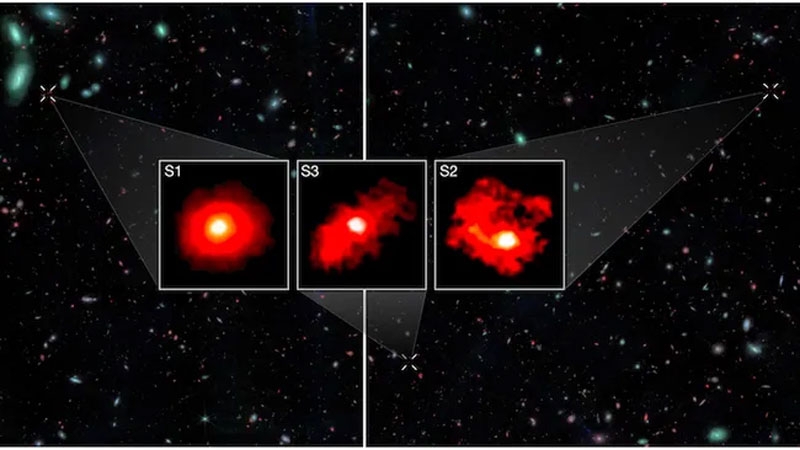Webb discovered three huge galaxies in the early Universe – scientists don’t understand why they formed so quickly


In data from the space observatory. James Webb, scientists have discovered three “Red Monsters” – three supermassive galaxies for their time, the rate of formation of which goes beyond the scope of modern cosmology. The sample is small, but it forces us to look for new signs of our inaccurate understanding of the nature of the formation of stars and galaxies in the early stages of the Universe.


Image source: University of Geneva
An international team of scientists led by astronomers from the University of Geneva (UNIGE) used data collected by Webb on galaxies at redshifts from z=5 to z=9. For these values, the age of the Universe was 1–1.5 billion years. Due to the accelerated expansion of stars and galaxies in the Universe, the wavelength of photons becomes longer and goes into an increasingly red region, which can be determined from spectral measurements. Webb specializes in this. Thus, it allows you to determine the distances to objects and their mass with acceptable accuracy.
Scientists selected 36 distant, massive, dusty, star-forming galaxies for in-depth analysis. Of this number, 33 galaxies fell within the framework of modern ideas about the rate of their formation, but three went far beyond the limits of the models. For this uniqueness and super-large mass, these three objects were called “Red Monsters”. Calculations showed that to achieve the observed masses, the rate of star birth in them had to be 50% higher than predicted.
It cannot be ruled out that errors could have crept into the observational data. And yet, scientists do not exclude the possibility that in the early Universe conditions could have developed to accelerate the processes of star birth. So far, the factual material is not enough to shake the foundations of modern cosmology. There is only a hint of incomplete knowledge about processes and phenomena in the early Universe. “Webb” is unlikely to become an instrument that will leave no stone unturned on previous views, but it did raise doubts, and in science there is nothing more valuable than criticism and healthy skepticism.
Recent Posts
Apple to Change OS Numbering: iOS 26 to Come This Year Instead of iOS 19
Apple is preparing a large-scale rebranding of its line of operating systems. This was reported…
The Witcher 3: Wild Hunt has matched Skyrim in sales, and every third Cyberpunk 2077 owner has bought the Phantom Liberty add-on
The cult open-world action role-playing game The Witcher 3: Wild Hunt, which recently celebrated its…
Analysts predict absurd surge in PC sales due to Trump’s indiscriminate tariffs
IDC analysts unexpectedly concluded that the current unstable tariff policy of the US administration will…
Adata XPG Mars 980 Blade PCIe 5.0 SSD Review: Affordable SM2508 Flagship
The first consumer SSDs with PCIe 5.0 interface appeared on the market about two years…
Electronic Arts to Focus on Key Franchises — Black Panther Action Game Cancelled, Cliffhanger Games Studio Closed
The IGN portal, citing internal correspondence from Electronic Arts, reported that the American publisher has…
Study: Apple C1 mobile modem falls short of Qualcomm modems in terms of connection quality in difficult conditions
A study by Cellular Insights Inc. found that Qualcomm's mobile modems perform better than Apple's…